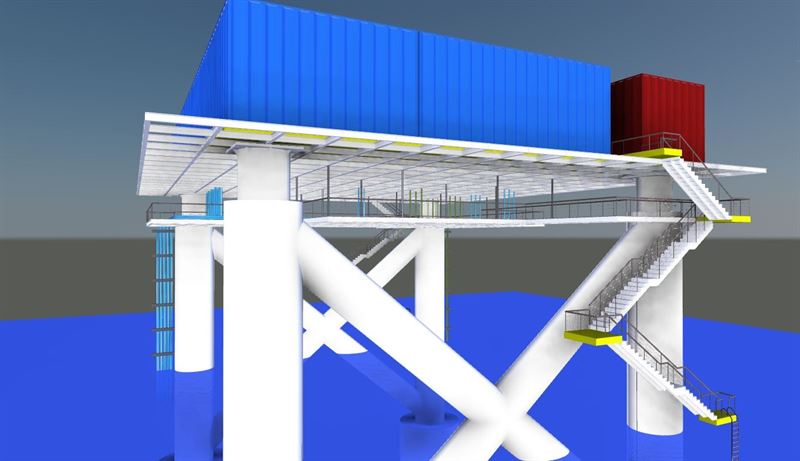Linxon and its parent companies Hitachi ABB Power Grids and SNC-Lavalin/Atkins have partnered by bringing together the technology and project execution expertise needed to make floating substations a reality.
The partnership combines the proven know-how and vast domain expertise developed in complex technical solutions such as AC offshore wind projects by Linxon and Hitachi ABB Power Grids with the expertise of SNC-Lavalin/Atkins in naval design and floating platforms.
“The Linxon floating offshore substation platform solutions will comprise modular, scalable, compact substation packages, including transformers, high-voltage switchgear and products specially developed by Hitachi ABB Power Grids for floating applications,” said Alfredo Parres, Head of Renewables at Hitachi ABB Power Grids. Hitachi ABB Power Grids is committed to support the development of the floating offshore wind market and supporting Linxon customers to deliver floating offshore wind projects.”
“With Linxon, we use proven technologies to make this leap into floating renewable energy possible. Hitachi ABB Power Grids recently launched a portfolio of substation solutions and a new range of transformers for offshore floating applications, designed to overcome the challenging of the offshore environment and withstand the physically demanding conditions on floating structures”, Parres continued.
“The Linxon and Hitachi ABB Power Grids floating substation concept can address the current market needs and be adapted for emerging applications,” said Stefan Reisacher. “Having used proven solutions within our concept designs, we are ready to take the next step with our key customers. “Within global efforts to build a sustainable future for coming generations, integrating renewables into the energy system is key. By teaming up together, we are accelerating the energy transition and supplying sustainable energy for all.”
“Wind power technologies are mature, but in many countries the deployment of renewables in deep waters is a still a challenge. Wind turbine generators capacity factors are growing in all regions and the development of floating turbine structures is maturing, allowing better business cases for developer and owners,” added Reisacher.
The potential
Floating substations will enable the next phase of the booming offshore wind power industry. Achieving an efficient and reliable floating substation is key to decarbonizing the electricity grid by unlocking large offshore wind generation potential.
Also Read: Asia to dominate offshore wind energy by 2050, says GWEC
The installed capacity of floating offshore wind generation is forecast to grow from a modest 66 mw in 2019 to at least 16 GW in 2030, as more and more countries in Europe, Asia and North America seek to harness the rich potential of deep-water wind resources.
The wind industry is eager to develop and adopt commercial-scale floating offshore wind farms comprising high-capacity wind turbines and standardized, scalable floating substations that make the development and operation of the installations viable and profitable.

